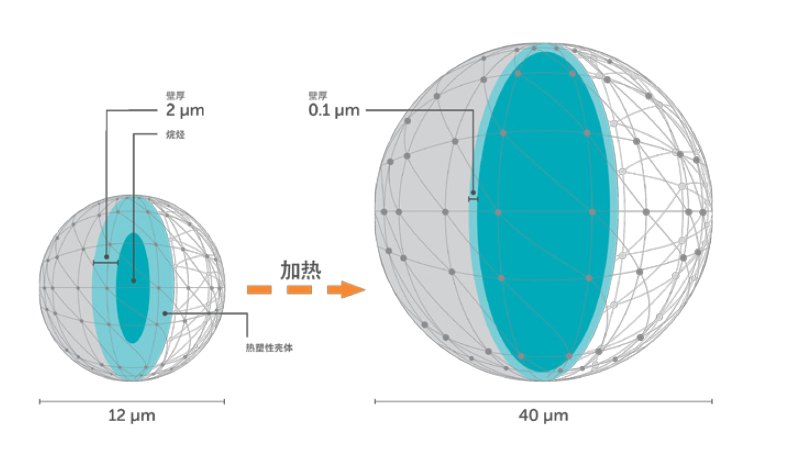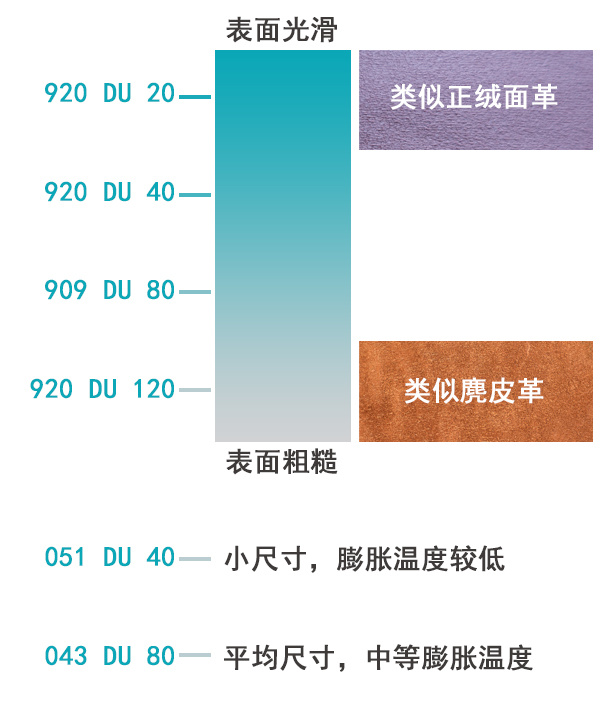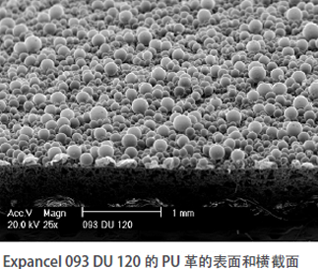産(chǎn)品丨Expancel微球在人造革中(zhōng)的應用(yòng)
發布時間:
2023-05-26
一 Expancel微球簡介

Expancel微球是一種極其微小(xiǎo)的球形顆粒,其結構為(wèi)聚合物(wù)的殼體(tǐ),内部包裹着氣體(tǐ)。受熱時,微球内部氣體(tǐ)壓力增大,熱塑性殼體(tǐ)變軟,使體(tǐ)積得以急劇膨脹,而氣體(tǐ)仍保留在殼體(tǐ)内部。
Expancel用(yòng)于人造革中(zhōng)的類型為(wèi)幹粉未膨脹型,有(yǒu)不同的粒徑大小(xiǎo)和膨脹溫度。型号:920 DU 20,920 DU 40,909DU 80,920 DU 120,093 DU 120等。
膨脹溫度—低溫:低于150℃、中(zhōng)溫:150-180℃、高溫:高于180℃以上。
小(xiǎo)粒徑表面效果:光滑的表面,類似正絨面革;大粒徑表面效果:粗糙表面,類似麂皮革。

三 Expancel微球在合成革中(zhōng)的配方應用(yòng)
配方:PU樹脂(100份),MEK(50-70份),顔料,木(mù)粉,蠟,Expancel DU微球(2-6份),二甲苯等。


版權所有(yǒu) © 2022 上海海逸科(kē)貿有(yǒu)限公(gōng)司





